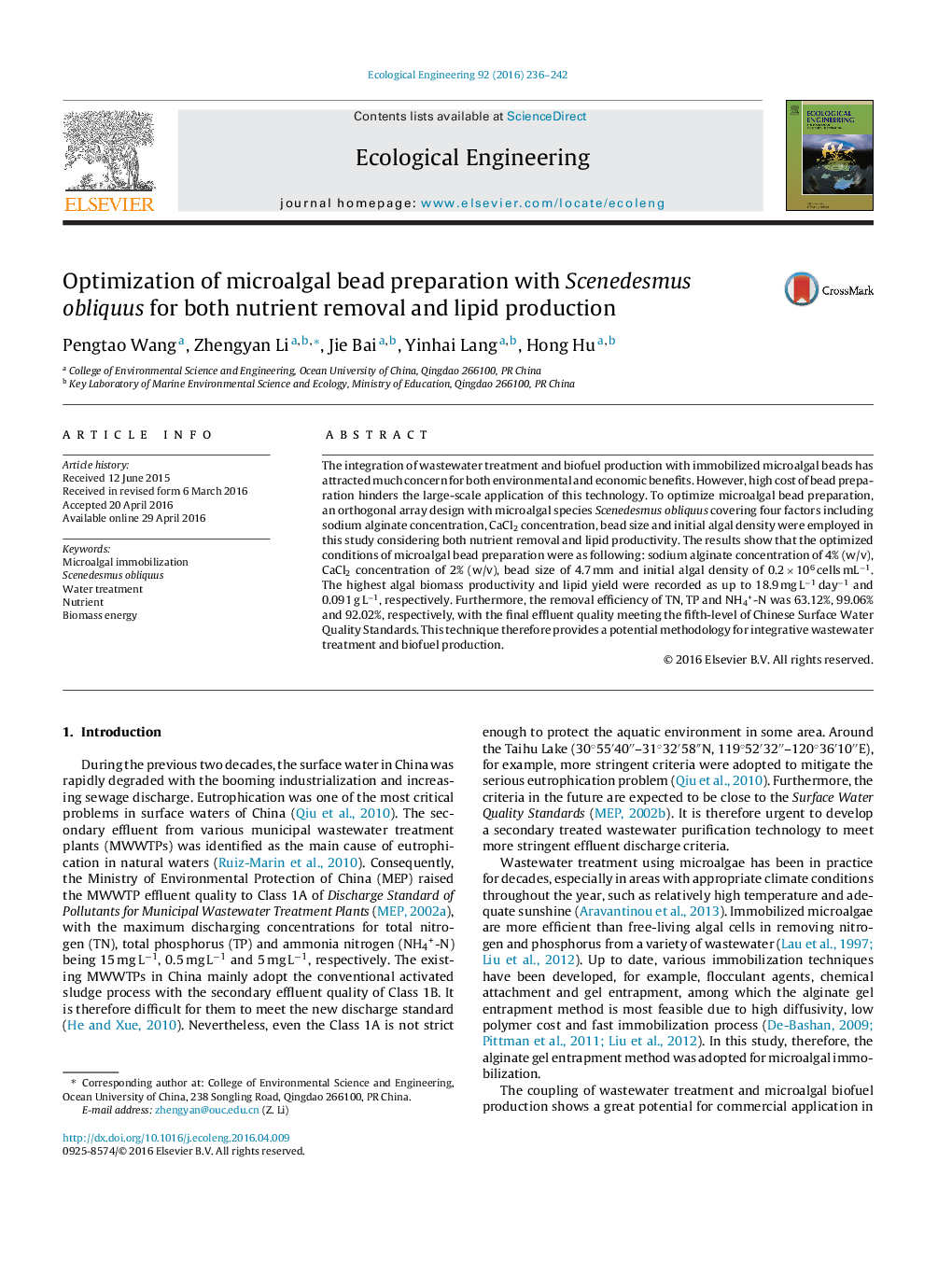| Article ID | Journal | Published Year | Pages | File Type |
|---|---|---|---|---|
| 4388630 | Ecological Engineering | 2016 | 7 Pages |
•The integration of nutrient removal and lipid production with microalgal beads is technically feasible.•Two-stage culture mode can effectively remove nutrients and enhance lipid yield.•High CaCl2 concentration will lead to severe microalgal leakage from beads.•We obtain the optimized conditions for microalgal bead preparation.
The integration of wastewater treatment and biofuel production with immobilized microalgal beads has attracted much concern for both environmental and economic benefits. However, high cost of bead preparation hinders the large-scale application of this technology. To optimize microalgal bead preparation, an orthogonal array design with microalgal species Scenedesmus obliquus covering four factors including sodium alginate concentration, CaCl2 concentration, bead size and initial algal density were employed in this study considering both nutrient removal and lipid productivity. The results show that the optimized conditions of microalgal bead preparation were as following: sodium alginate concentration of 4% (w/v), CaCl2 concentration of 2% (w/v), bead size of 4.7 mm and initial algal density of 0.2 × 106 cells mL−1. The highest algal biomass productivity and lipid yield were recorded as up to 18.9 mg L−1 day−1 and 0.091 g L−1, respectively. Furthermore, the removal efficiency of TN, TP and NH4+-N was 63.12%, 99.06% and 92.02%, respectively, with the final effluent quality meeting the fifth-level of Chinese Surface Water Quality Standards. This technique therefore provides a potential methodology for integrative wastewater treatment and biofuel production.
